- Home
- Clive Cussler
Inca Gold dp-12 Page 20
Inca Gold dp-12 Read online
Page 20
"I'm a sick old man," Bender replied, "whose heart refuses to stop."
"You certainly don't sound ill."
"You should see me. The diseases I picked up during my travels have returned to ravage what's left of my body. I am not a pretty sight, so I rarely entertain visitors. But I'll tell you what I'll do, Mr. Perlmutter. I'll send you the book as a gift."
"My God, sir, you don't have to--"
"No, no, I insist. Frank Adams told me about your magnificent library on ships. I'd rather someone like you, who can appreciate the journal, possess it rather than a collector who simply puts it on a shelf to impress his friends."
"That's very kind of you," said Perlmutter sincerely. "I'm truly grateful for your kind generosity."
"Take it and enjoy," Bender said graciously. "I assume you'd like to study the journal as soon as possible."
"I don't want to inconvenience you."
"Not at all, I'll send it Federal Express so you'll have it in your hands first thing tomorrow."
"Thank you, Mr. Bender. Thank you very much. I'll treat the journal with every bit of the respect it deserves."
"Good. I hope you find what you're looking for."
"So do I," said Perlmutter, his confidence soaring over the breakthrough. "Believe me, so do I."
At twenty minutes after ten o'clock the next morning, Perlmutter threw open the door before the Federal Express driver could punch the doorbell button. "You must be expecting this, Mr. Perlmutter, " said the young blackhaired man, wearing glasses and a friendly smile.
"Like a child waiting for Santa." Perlmutter laughed, signing for the reinforced envelope.
He hurried into his study, pulling the tab and opening the envelope as he walked. He sat at his desk, slipped on his glasses, and held the journal of Thomas Cuttill in his hands as if it were the Holy Grail. The cover was the skin of some unidentifiable animal and the pages were yellowed parchment in a state of excellent preservation. The ink was brown, probably a concoction Cuttill had managed to brew from the root of some tree. There were no more than twenty pages. The entries were written in the quaint Elizabethan prose of the day. The handwriting seemed labored, with any number of misspellings, indicating a man who was reasonably well educated for the times. The first entry was dated March 1578, but was written much later:
Mine strange historie of the passte sexteen yeares, by Thomas Cuttill, formerly of Devonshire.
It was the account of a shipwrecked sailor, cast away after barely surviving the sea's violent fury, only to endure incredible hardships in a savage land in his unsuccessful attempt to return home. As he read the passages, beginning with Cuttill's departure from England with Drake, Perlmutter noted that it was written in a more honest style than narratives of later centuries, which were littered with sermons, romantic exaggerations, and clichés. Cuttill's persistence, his will to survive, and his ingenuity in overcoming terrible obstacles without once begging for the help of God made a profound impression on Perlmutter. Cuttill was a man he would like to have known.
After finding himself the only survivor on the galleon after the tidal wave carried it far inland, Cuttill chose the unknown horrors of the mountains and jungle rather than capture and torture by the avenging Spanish, who were mad as wasps at the audacious capture of their treasure galleon by the hated Englishman, Drake. All Cuttill knew was that the Atlantic Ocean lay somewhere far to the east. How far, he could not even guess. Reaching the sea, and then somehow finding a friendly ship that might carry him back to England would be nothing short of a miracle. But it was the only path open to him.
On the western slopes of the Andes the Spanish had already created colonies of large estates, now worked by the once-proud Incas, who were enslaved and greatly reduced in numbers by inhumane treatment and infection from measles and smallpox. Cuttill crept through the estates under cover of darkness, stealing food at every opportunity. After two months of traveling a few short kilometers each night to elude the Spanish and remain out of sight of any Indians who might give him away, he crossed over the continental divide of the Andes, through the isolated valleys, and descended into the green hell of the Amazon River Basin.
From that point on, Cuttill's life became even more of a nightmare. He struggled through unending swamps up to his waist, fought his way through forests so thick every meter of growth had to be cut away with his knife. Swarms of insects, snakes, and alligators were a constant peril, the snakes often attacking without warning. He suffered from dysentery and fever but still struggled on, often covering only 100 meters (328 feet) during daylight. After several months, he stumbled into a village of hostile natives, who immediately tied him with ropes and kept him imprisoned as a slave for five years.
Cuttill finally managed to escape by stealing a dugout canoe and paddling down the Amazon River at night under a waning moon. Contracting malaria, he came within an inch of dying, but as he drifted unconscious in his canoe he was found by a tribe of long-haired women who nursed him back to health. It was the same tribe of women the Spanish explorer Francisco de Orellana had discovered during his futile search for El Dorado. He named the river Amazonas in honor of the Amazon warriors of Greek legend because the native women could draw a bow with any man.
Cuttill introduced a number of labor-saving devices to the women and the few men who lived with them. He built a potter's wheel and taught them how to make huge intricate bowls and water vessels. He constructed wheelbarrows and waterwheels for irrigation, and showed them how to use pulleys to lift heavy weights. Soon looked upon as a god, Cuttill made an enjoyable life among the tribe. He took three of the most attractive women as wives and quickly produced several children.
His desire to see home again slowly dimmed. A bachelor when he left England, he was sure there would be no relatives or old shipmates left to greet his return. And then there was the possibility that Drake, a stern disciplinarian, would demand punishment for losing the Concepcion.
No longer physically capable of suffering the deprivations and hardships of along journey, Cuttill reluctantly decided to spend the remaining years of his life on the banks of the Amazon. When the Portuguese survey party passed through, he gave them his journal, requesting that it be somehow sent to England and placed in the hands of Francis Drake.
After Perlmutter finished reading the journal, he leaned back in his swivel chair, removed his glasses and rubbed his eyes. Any doubts he might have had in the back of his mind about the authenticity of the journal had quickly evaporated. The writing on the parchment showed strong, bold strokes, hardly the work of a madman who was sick and dying. Cuttill's descriptions did not seem fabricated or embellished. Perlmutter felt certain the experiences and hardships suffered by Francis Drake's sailing master truly occurred, and that the account was honestly set down by someone who lived what he wrote.
Perlmutter went back to the heart of his quest, Cuttill's brief mention of the treasures left on board the Concepcion by Drake. He resettled his glasses on his imposing red nose and turned to the final entry of the narrative:
Me mind is as set as a stout ship before a narth winde. I shalle not retarn to mye homelande. I feare Captaan Drake was maddened for me not bringen the achant tresures and the jaade boxe withe the notted stringe to England soos it cud be preezentid to guude Queen Bess. I left it withe the wraaked ship. I shalle be baryed heer among the peapol who have becume my famly. Writen bye the hande of Thomas Cuttill, sailing mastere of the Golden Hinde this unknown day in the yeare 1594
Perlmutter slowly looked up and stared at a seventeenth-century Spanish painting on his wall, depicting a fleet of Spanish galleons sailing across a sea under the golden orange glow of a setting sun. He had found it in a bazaar in Segovia and took it home for a tenth of its real value. He gently closed the fragile journal, lifted his bulk from the chair and began to pace around the room, hands clasped behind his back.
A crewman of Francis Drake had truly lived and died somewhere along the Amazon River. A Spanish galleon was thrown
into a coastal jungle by an immense tidal wave. And a jade box containing a knotted cord did exist at one time. Could it still lie amid the rotting timbers of the galleon, buried deep in a rain forest? A four-hundred-year-old mystery had suddenly surfaced from the shadows of time and revealed an enticing clue. Perlmutter was pleased with his successful investigative effort, but he well knew that confirmation of the myth was merely the first enticing step in a hunt for treasure.
The next trick, and the most perplexing one, was to narrow the theater of search to as small a stage as possible.
Hiram Yaeger adored his big supercomputer as much as he did his wife and children, perhaps more, he could seldom tear himself away from the images he projected on his giant monitor to go home to his family. Computers were his life from the first time he looked at the screen on a monitor and typed out a command. The love affair never cooled. If anything it grew more passionate with the passing years, especially after he constructed a monster unit of his own design for NUMA's vast oceans data center. The incredible display of information-gathering power at his beck and call never ceased to astound him. He caressed the keyboard with his fingers as though it were a living entity, his excitement blossoming whenever bits and pieces of data began coming together to form a solution.
Yaeger was hooked into a vast high-speed computing network with the capacity to transfer enormous amounts of digital data between libraries, newspaper morgues, research laboratories, universities, and historic archives anywhere in the world. The "data superhighway," as it was called, could transmit billions of bits of information in the blink of a cursor. By tapping into the gigabit network, Yaeger began retrieving and assembling enough data to enable him to lay out a search grid with a 60 percent probability factor of containing the four-century-old landlocked galleon.
He was so deeply involved with the search for the Nuestra Senora de la Concepcion that he did not notice nor hear Admiral James Sandecker step into his sanctum sanctorum and sit down in a chair behind him.
The founder and first director of NUMA was small in stature but filled with enough testosterone to fuel the offensive line of the Dallas Cowboys. A trim fifty-eight, and a fitness addict, he ran five miles every morning from his apartment to the imposing glass building that housed two of the five thousand engineers, scientists, and other employees that formed NUMA, the undersea counterpart of the space agency NASA. His head was covered by straight flaming red hair, graying at the temples and parted in the middle, while his chin bristled with a magnificent Vandyke beard. Despite his addiction to health and nutrition, he was never without a huge cigar made from tobacco personally selected and rolled for him by the owner of a plantation in Jamaica.
Under his direction NUMA had taken the field of oceanography and made it as popular as space science. His persuasive pleas to Congress for funding, supported by twenty top universities with schools in the marine sciences and a host of large corporations investing in underwater projects, had enabled NUMA to take, great strides in deep sea geology and mining, marine archaeology, biological studies of sea life, and studies of the effects of oceans on the earth's climate. One of his greatest contributions, perhaps, was supporting Hiram Yaeger's huge computer network, the finest and largest archive of ocean sciences in the world.
Sandecker was not universally admired by all of Washington's bureaucracy, but he was respected as a hard driving, dedicated, and honest man, and his relationship with the man in the Oval Office of the White House was warm and friendly.
"Making any progress?" he asked Yaeger.
"Sorry, Admiral." Yaeger spoke without turning around. "I didn't see you come in. I was in the midst of collecting data on the water currents off Ecuador."
"Don't stroke me, Hiram," Sandecker said, with the look of a ferret on a hunt. "I know what you're up to."
"Sir?"
"You're searching for a stretch of coastline where a tidal wave struck in 1578."
"A tidal wave?"
"Yes, you know, a big wall of water that barreled in from the sea and carried a Spanish galleon over a beach and into a jungle." The admiral puffed out a cloud of noxious smoke and went on. "I wasn't aware that I had authorized a treasure hunt on NUMA's time and budget."
Yaeger paused and swiveled around in his chair. "You know?"
"The word is knew. Right from the beginning."
"Do you know what you are, Admiral?"
"A canny old bastard who can read minds," he said with some satisfaction.
"Did your Ouija board also tell you the tidal wave and the galleon are little more than folklore?"
"If anyone can smell fact from fiction, it's our friend Dirk Pitt," Sandecker said inflexibly. "Now what have you dug up?"
Yaeger smiled wanly and answered. "I began by dipping into various Geographic Information Systems to determine a logical site for a ship to remain hidden in a jungle over four centuries somewhere between Lima and Panama City. Thanks to global positioning satellites, we can look at details of Central and South America that were never mapped before. Maps showing tropical rain forests that grow along the coastline were studied first. I quickly dismissed Peru because its coastal regions are deserts with little or no vegetation. That still left over a thousand kilometers of forested shore along northern Ecuador and almost all of Colombia. Again, I was able to eliminate about forty percent of the coastline with geology too steep or unfavorable for a wave with enough mass and momentum to carry a five-hundred-and-seventy-ton ship any distance overland. Then I knocked off another twenty percent for open grassland areas without thick trees or other foliage that could hide the remains of a ship."
"That still leaves Pitt with a search area four hundred kilometers in length."
"Nature can drastically alter the environment in five hundred years," said Yaeger. "By starting with antique maps drawn by the early Spaniards, and examining records of changes that occurred in the geology and landscape, I was able to decrease the length of the search grid another hundred and fifty kilometers."
"How did you compare the modern terrain with the old?"
"With three-dimensional overlays," replied Yaeger. "By either reducing or increasing the scale of the old charts to match the latest satellite maps, and then overlaying one upon the other, any variations of the coastal jungles since the galleon vanished became readily apparent. I found that much of the heavily forested coastal jungles had been cut down over the centuries for farmland."
"Not enough," Sandecker said irritably, "not nearly enough. You'll have to whittle the grid down to no more than twenty kilometers if you want to give Pitt a fighting chance of finding the wreck."
"Bear with me, Admiral," said Yaeger patiently. "The next step was to conduct a search through historical archives for recorded tidal waves that struck the Pacific coastline of South America in the sixteenth century. Fortunately, the occasions were well documented by the Spanish during the conquest. I found four. Two in Chile in 1562 and 1575. Peru suffered them in 1570 and again in 1578, the year Drake captured the galleon."
"Where did the latter strike?" Sandecker asked.
"The only account comes from the log of a Spanish supply ship on its way to Callao. It passed over a `crazy sea' that swept inland toward Bahia de Caraquez in Ecuador. Bahia, of course, means bay."
" `Crazy sea' is a good description of water turmoil above an earthquake on the seafloor. No doubt a seismic wave generated by a movement of the fault that parallels the west coast of the entire South American continent."
"The captain also noted that on the return voyage, a village that sat at the mouth of a river running into the bay had vanished."
"There is no question of the date?"
"Right on the money. The tropical rain forest to the east appears to be impenetrable."
"Okay, we have a ballpark. The next question is, what was the wave length?"
"A tidal wave, or tsunami, can have a length of two hundred kilometers or more," said Yaeger.
Sandecker considered this. "How wide is the Bay of
Caraquez?"
Yaeger called up a map on his monitor. "The entrance is narrow, no more than four or five kilometers."
"And you say the captain of the supply ship logged a missing village by a river?"
"Yes, sir, that was his description."
"How does the contour of the bay today differ from that period?"
"The outer bay has changed very little," answered Yaeger, after bringing up a program that depicted the old Spanish charts and the satellite map in different colors as he overlaid them on the screen. "The inner bay has moved about a kilometer toward the sea due to silt buildup from the Chone River."
Sandecker stared at the screen for a long moment, then said slowly, "Can your electronic contraption do a simulation of the tidal wave sweeping the galleon onto shore?"
Yaeger nodded. "Yes, but there are a number of factors to consider."
"Such as?"
"What was the height of the wave and how fast was it traveling."
"It would have to be at least thirty meters high and traveling at better than a hundred and fifty kilometers an hour to carry a five-hundred-and-seventy-ton ship so far into the jungle that she has never been found."
"Okay, let's see what I can do with digital imagery."
Yaeger typed a series of commands on his keyboard and sat back, staring at the monitor for several seconds, examining the image he produced on the screen. Then he used a special function control to fine-tune the graphics until he could generate a realistic and dramatic simulation of a tidal wave crossing an imaginary shoreline. "There you have it," he announced. "Virtual reality configuration."
"Now generate a ship," ordered Sandecker.
Yaeger was not an expert on the construction of sixteenth-century galleons, but he produced a respectable image of one rolling slowly on the waves that was equal to a projector displaying moving graphics at sixty frames per second. The galleon appeared so realistic any unsuspecting soul who walked into the room would have thought they were watching a movie.
"How does it look, Admiral?"
"Hard to believe a machine can create something so lifelike," said Sandecker, visibly impressed.

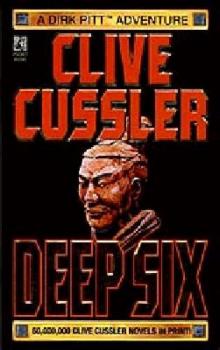 Deep Six
Deep Six Odessa Sea
Odessa Sea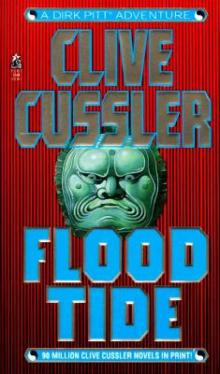 Flood Tide
Flood Tide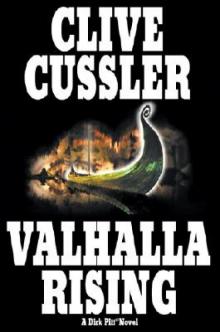 Valhalla Rising
Valhalla Rising Thriller 2
Thriller 2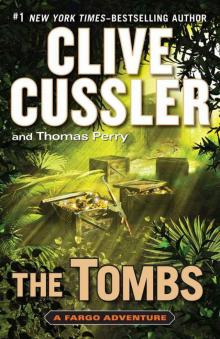 The Tombs
The Tombs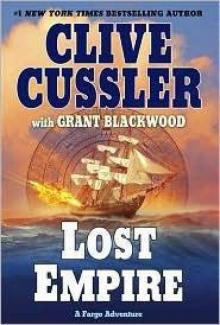 Lost Empire
Lost Empire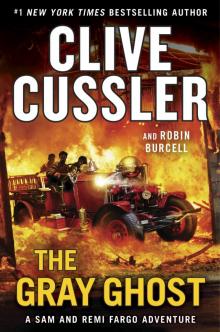 The Gray Ghost
The Gray Ghost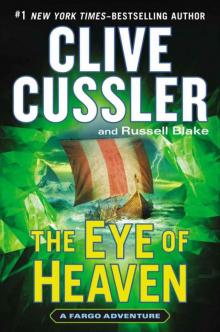 The Eye of Heaven
The Eye of Heaven Polar Shift
Polar Shift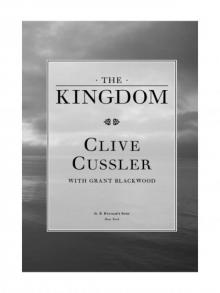 The Kingdom
The Kingdom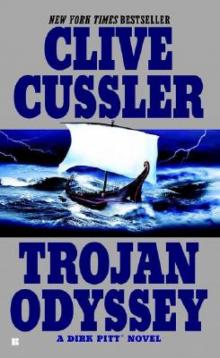 Trojan Odyssey
Trojan Odyssey Shadow Tyrants
Shadow Tyrants Nighthawk
Nighthawk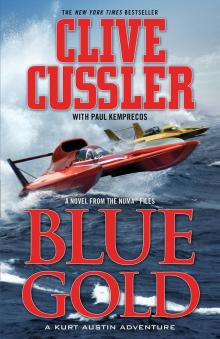 Blue Gold
Blue Gold Serpent
Serpent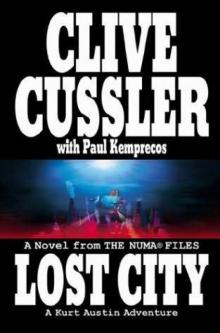 Lost City
Lost City The Gangster
The Gangster White Death
White Death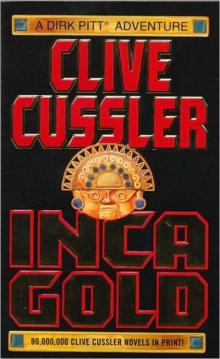 Inca Gold
Inca Gold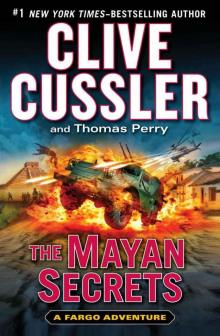 The Mayan Secrets
The Mayan Secrets The Pharaoh's Secret
The Pharaoh's Secret The Emperor's Revenge
The Emperor's Revenge Corsair
Corsair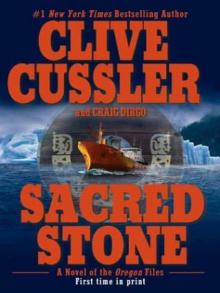 Sacred Stone
Sacred Stone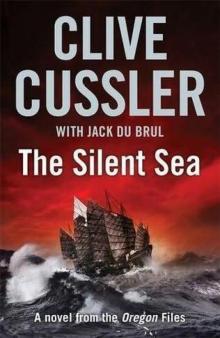 The Silent Sea
The Silent Sea The Rising Sea
The Rising Sea Black Wind
Black Wind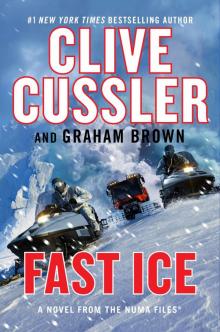 Fast Ice
Fast Ice Ghost Ship
Ghost Ship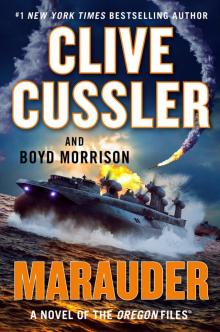 Marauder
Marauder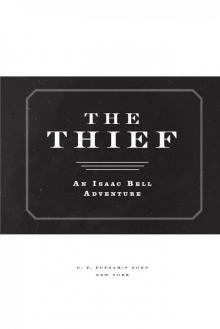 The Thief
The Thief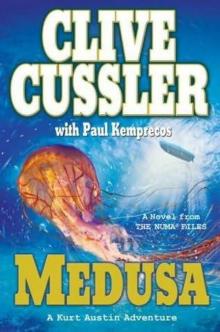 Medusa
Medusa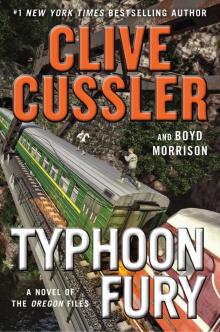 Typhoon Fury
Typhoon Fury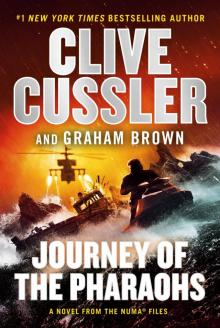 Journey of the Pharaohs
Journey of the Pharaohs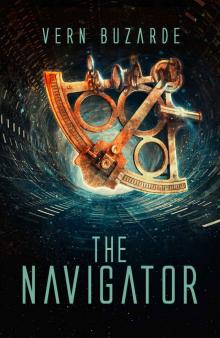 The Navigator
The Navigator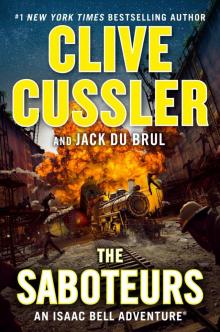 The Saboteurs
The Saboteurs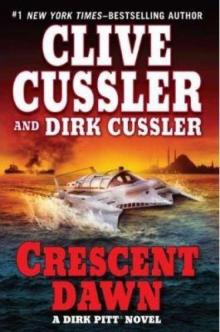 Crescent Dawn
Crescent Dawn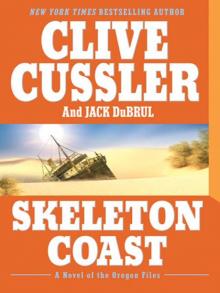 Skeleton Coast
Skeleton Coast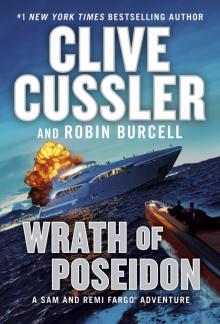 Wrath of Poseidon
Wrath of Poseidon The Mediterranean Caper
The Mediterranean Caper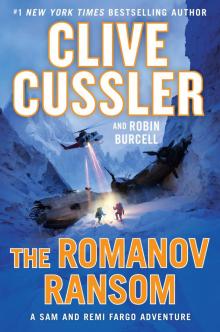 The Romanov Ransom
The Romanov Ransom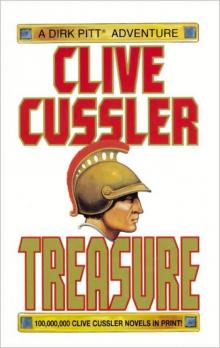 Treasure
Treasure The Race
The Race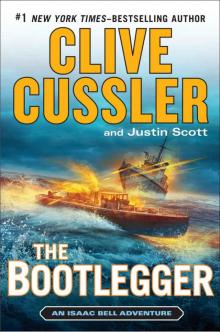 The Bootlegger
The Bootlegger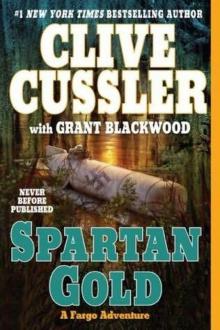 Spartan Gold
Spartan Gold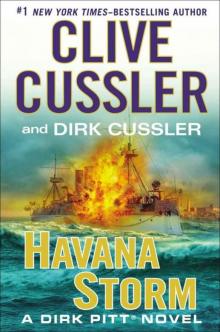 Havana Storm
Havana Storm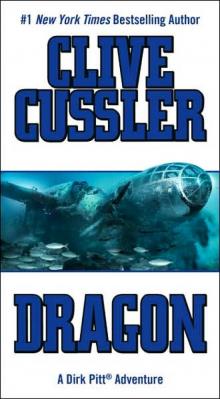 Dragon
Dragon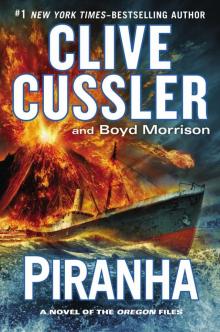 Piranha
Piranha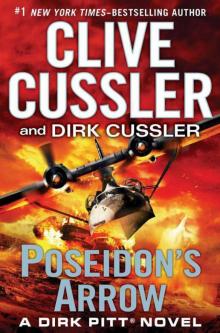 Poseidon's Arrow
Poseidon's Arrow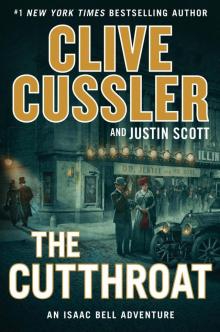 The Cutthroat
The Cutthroat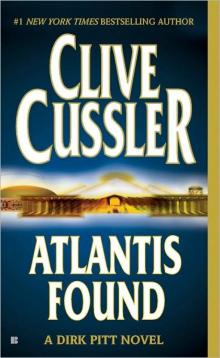 Atlantis Found
Atlantis Found The Jungle
The Jungle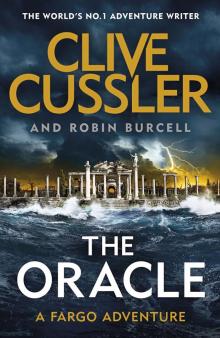 The Oracle
The Oracle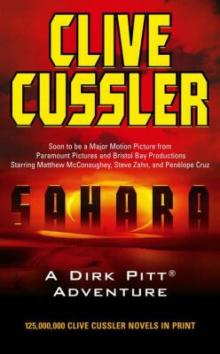 Treasure / Dragon / Sahara: Clive Cussler Gift Set
Treasure / Dragon / Sahara: Clive Cussler Gift Set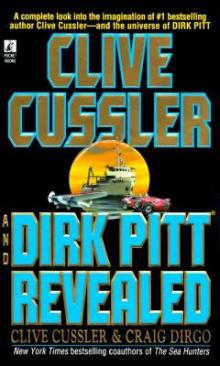 Clive Cussler and Dirk Pitt Revealed
Clive Cussler and Dirk Pitt Revealed The Sea Hunters
The Sea Hunters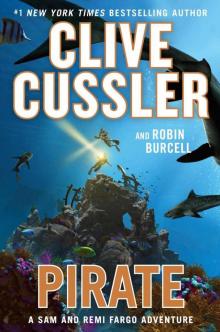 Pirate
Pirate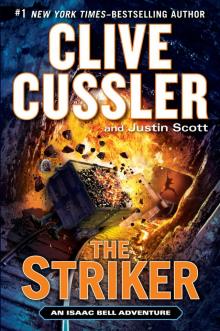 The Striker
The Striker Plague Ship
Plague Ship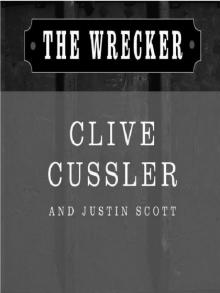 The Wrecker
The Wrecker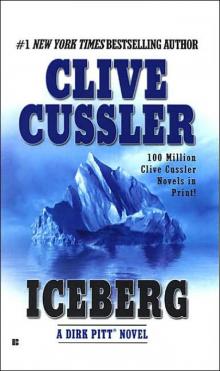 Iceberg
Iceberg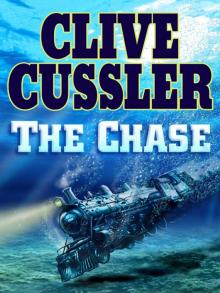 The Chase
The Chase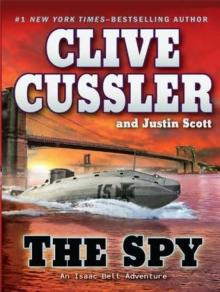 The Spy
The Spy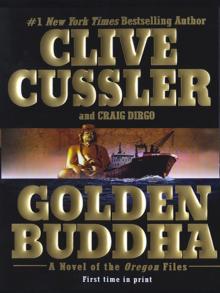 Golden Buddha
Golden Buddha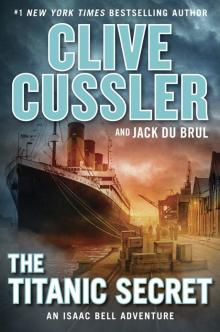 The Titanic Secret
The Titanic Secret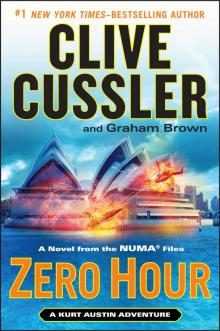 Zero Hour
Zero Hour Fire Ice
Fire Ice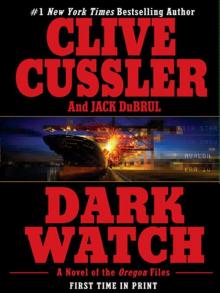 Dark Watch
Dark Watch The Storm
The Storm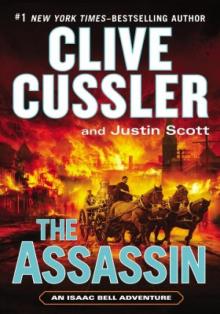 The Assassin
The Assassin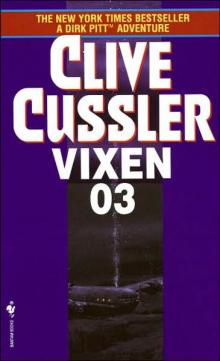 Vixen 03
Vixen 03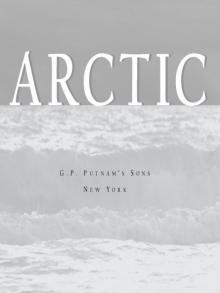 Arctic Drift
Arctic Drift Night Probe!
Night Probe! Cyclops
Cyclops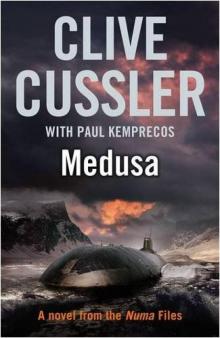 Medusa nf-8
Medusa nf-8 Shock Wave dp-13
Shock Wave dp-13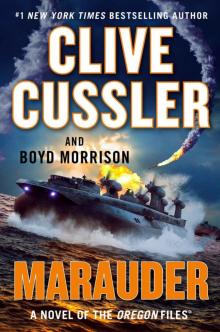 Marauder (The Oregon Files)
Marauder (The Oregon Files)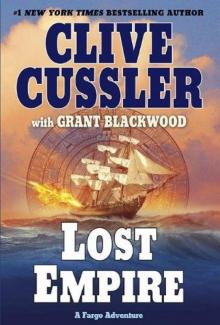 Lost Empire fa-2
Lost Empire fa-2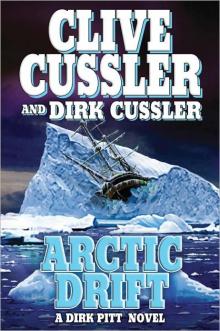 Arctic Drift dp-20
Arctic Drift dp-20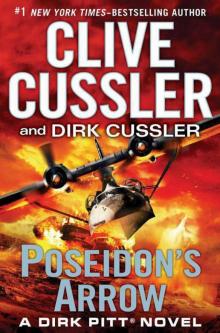 Dirk Pitt 22 - Poseidon's Arrow
Dirk Pitt 22 - Poseidon's Arrow Treasure of Khan dp-19
Treasure of Khan dp-19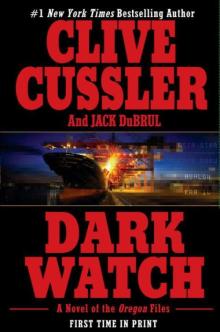 Dark Watch of-3
Dark Watch of-3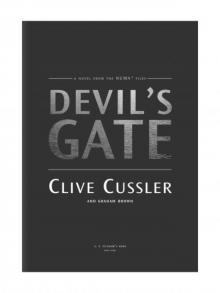 Devil's Gate
Devil's Gate The Sea Hunters II: More True Adventures with Famous Shipwrecks
The Sea Hunters II: More True Adventures with Famous Shipwrecks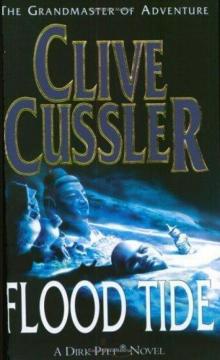 Flood Tide dp-14
Flood Tide dp-14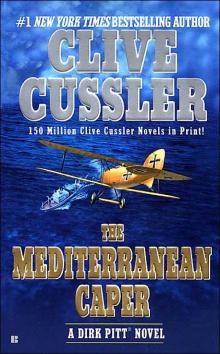 The Mediterranean Caper dp-2
The Mediterranean Caper dp-2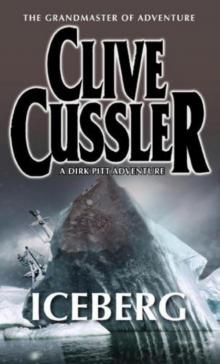 Iceberg dp-3
Iceberg dp-3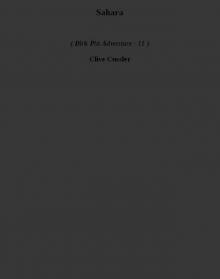 Sahara dpa-11
Sahara dpa-11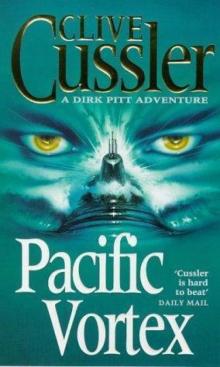 Pacific Vortex! dp-1
Pacific Vortex! dp-1 Deep Six dp-7
Deep Six dp-7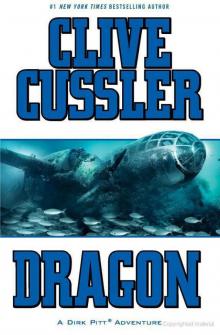 Dragon dp-10
Dragon dp-10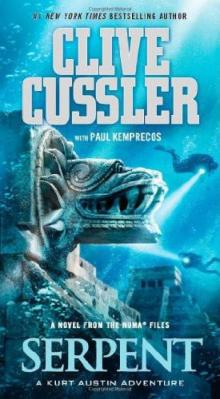 Serpent nf-1
Serpent nf-1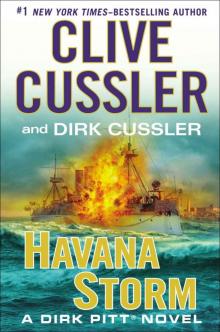 Havana Storm (Dirk Pitt Adventure)
Havana Storm (Dirk Pitt Adventure)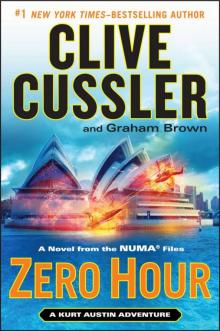 Zero Hour nf-11
Zero Hour nf-11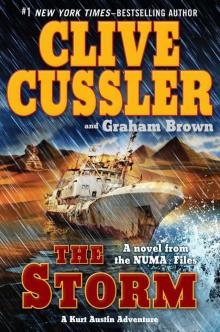 The Storm nf-10
The Storm nf-10 The Thief ib-5
The Thief ib-5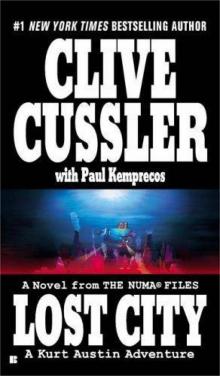 Lost City nf-5
Lost City nf-5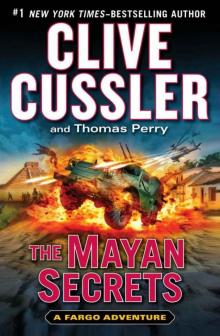 The Mayan Secrets fa-5
The Mayan Secrets fa-5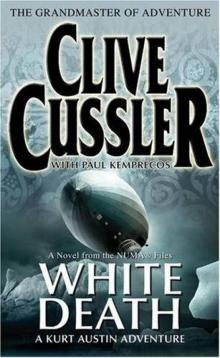 White Death nf-4
White Death nf-4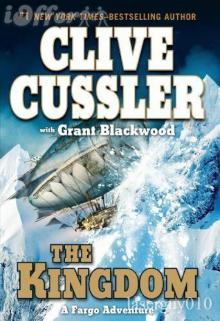 The Kingdom fa-3
The Kingdom fa-3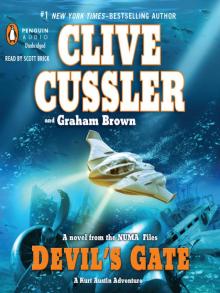 Devil's Gate nf-9
Devil's Gate nf-9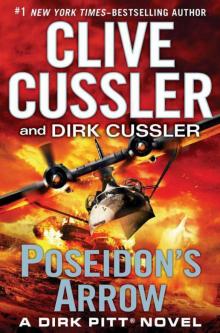 Poseidon's Arrow dp-22
Poseidon's Arrow dp-22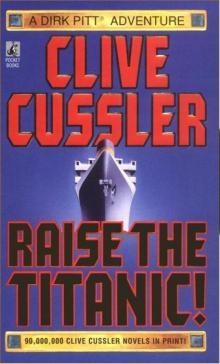 Raise the Titanic dp-4
Raise the Titanic dp-4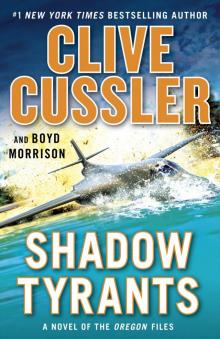 Shadow Tyrants--Clive Cussler
Shadow Tyrants--Clive Cussler Sacred Stone of-2
Sacred Stone of-2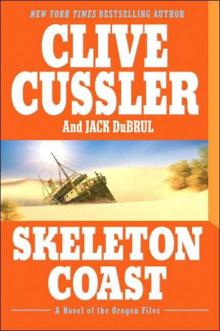 Skeleton Coast tof-4
Skeleton Coast tof-4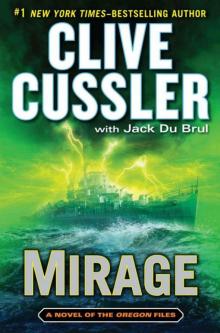 Mirage tof-9
Mirage tof-9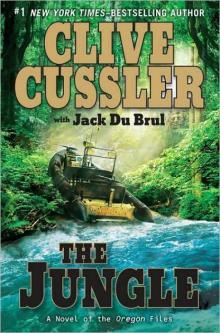 The Jungle of-8
The Jungle of-8 The Emperor's Revenge (The Oregon Files)
The Emperor's Revenge (The Oregon Files)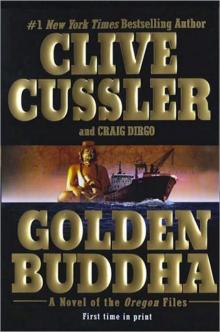 Golden Buddha of-1
Golden Buddha of-1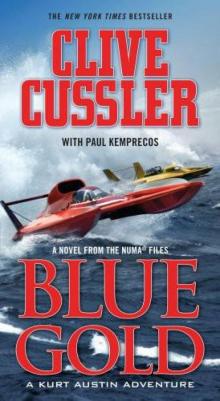 Blue & Gold
Blue & Gold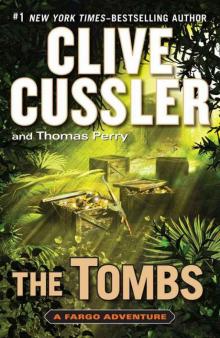 The Tombs fa-4
The Tombs fa-4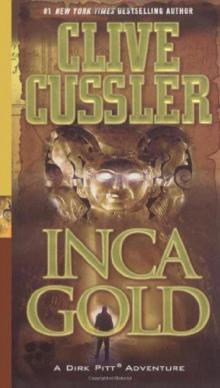 Inca Gold dp-12
Inca Gold dp-12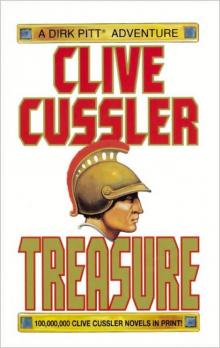 Treasure dp-9
Treasure dp-9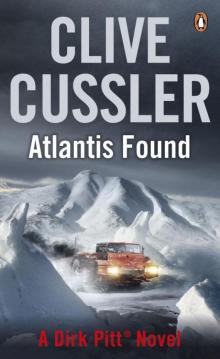 Atlantis Found dp-15
Atlantis Found dp-15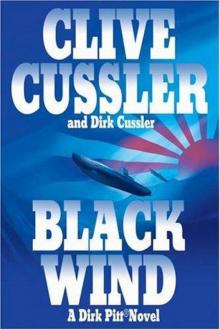 Black Wind dp-18
Black Wind dp-18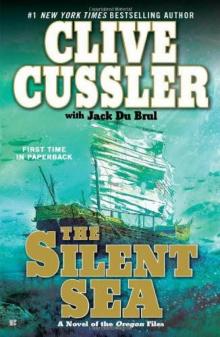 the Silent Sea (2010) tof-7
the Silent Sea (2010) tof-7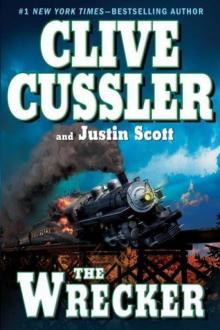 The Wrecker ib-2
The Wrecker ib-2 Fire Ice nf-3
Fire Ice nf-3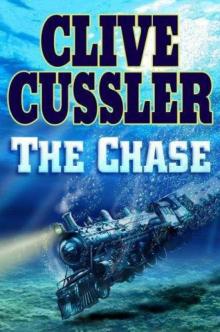 The Chase ib-1
The Chase ib-1 Sahara
Sahara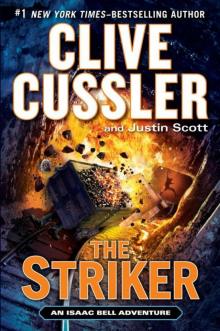 The Striker ib-6
The Striker ib-6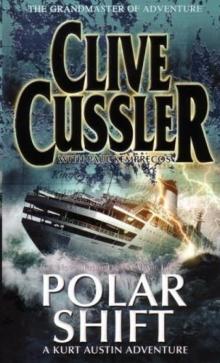 Polar Shift nf-6
Polar Shift nf-6 The Race ib-4
The Race ib-4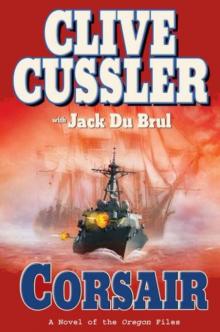 Corsair of-6
Corsair of-6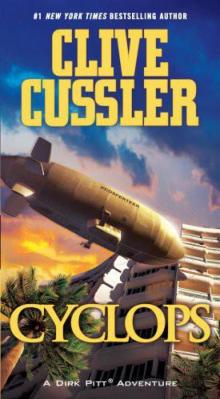 Cyclops dp-8
Cyclops dp-8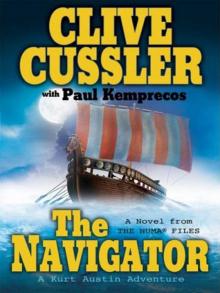 The Navigator nf-7
The Navigator nf-7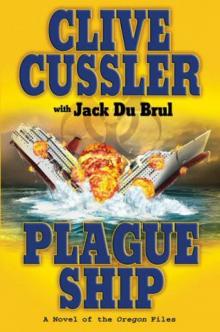 Plague Ship tof-5
Plague Ship tof-5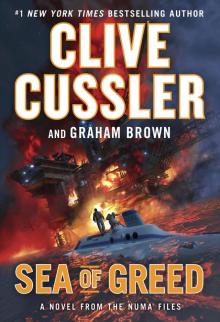 Sea of Greed
Sea of Greed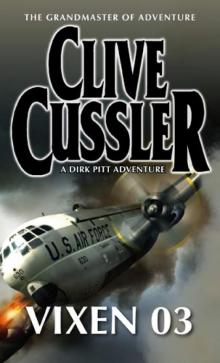 Vixen 03 dp-5
Vixen 03 dp-5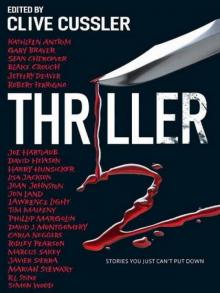 Thriller 2: Stories You Just Can't Put Down
Thriller 2: Stories You Just Can't Put Down